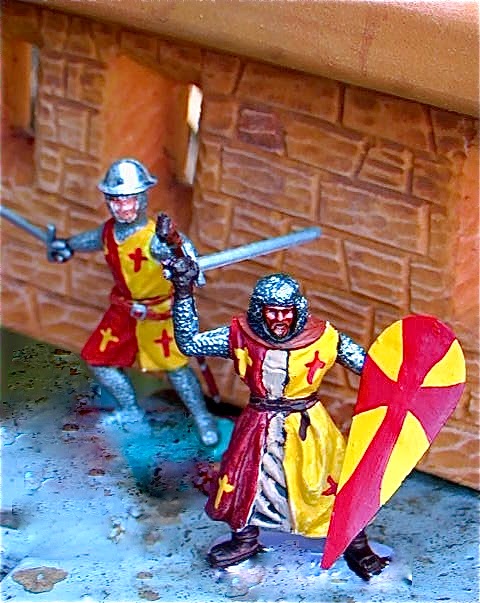Het gespeelde scenario.
Thema: Operation Totalize - Normandie - 7&8 Augustus 1944.
Na de bevrijding van Caen door het Brits leger eind July 1944. Besliste generaal Montgomery om verder door te breken naar het zuiden richting de stad Falaise, waarbij de amerikanen van uit Bretagne ten zuiden van de landingszone van Normandïen een doorbraak moesten maken van west naar oost, om te proberen met de Britten via het zuiden een verbinding te maken en zodoende het grootse deel van het Duits leger in te sluiten. Montgomery vertrok op Hill 122 ten zuiden van Caen over de Nationale 158 richting Potigny nog in handen van de Duitsers, om 23 u 55 op 6 augustus 1944. Dit in de hol van de nacht, zonder licht of oriëntatie punten, dit allemaal voorafgegaan door een barrage bombardement van de Royaal Air Force.
De toestand was chaotisch op de grond bij het vertrek. De wagens en tanks hadden geen enkel visibiliteit door het opgewaaide stof van hun voertuigen en het voorafgaande bombardement. Sommige lopen vast in de kraters van het lucht bombardement of raakte met mekaar in botsing.
Det 3de Canadese infanterie divisie ondersteund door de 4de Canadese gepantserde divisie, langs beide kanten van de N158, rukte op via Cintheaux, Haut Mesnil. Van daar opgesplitst in twee delen, met als eind objectief, de ene Hill 140, en de nadere Hill 195. Beide eenheden lopen in de strijd zware verliezen op.
Aan hun rechter zijde werden ze gesteund door de 2de Canadese infanterie divisie op zijn beurt ondersteund door de 2de Canadese gepantserde tank brigade.
Aan linkere zijde werd de 1ste Poolse gepantserde divisie ingezet gesteund op hun linkere zijde door het 51ste Britse Schotse divisie met steun van de 33ste Britse gepantserde brigade met churchill tanks.
Hun tegenstanders waren de 89ste Duitse infanterie divisie, de 85ste Duitse infanterie divisie, de 272th Duitse infanterie divisie, de 12ste Duitse gepantserde SS divisie en de 101ste Duitse zware gepantserde SS bataljon .
Het einde van de operatie liep uit op een Britse mislukking. Het Brits leger liep te veel verliezen op door te moeten opereren in open veld tegenover de Duitse anti tank Pak eenheden, door de artillerie uitgerust met batterijen van 105 en 155 mm en door de nebelwerfer van het 83ste Nebelwerfer SS regiment.
Het Duits leger raakte niet op tijd ingesloten en had nog de tijd en kans om voor het grootste deel met materiaal en manschappen de omsingeling te vermijden.....
Het spel - Adrien Van Hove
Op de tafel heb ik drie corridors gemaakt met rechts de Canadese, in het midden de Polen en links de Britten.
Geen van de eenheden mocht reageren op acties van de Duitsers in de andere corridors en enkel de eigen opdracht vervullen.
De Duitse eenheden staan volledig verborgen op de tafel, geen enkel tank, voertuig, anti tank kanon, panzerfaust of vlammenwerper was zichtbaar voor de Britten.. Dat heeft werkelijk een aantal verassingen opgeleverd, waarbij bijna op het einde van een beurt een geallieerde onverwacht vlak bij een tegenstander kwam te staan. Zo heeft mijn kleinzoon,Robbe, met een PAK 40 - 75 mm anti tank in de reserved fire 1 Sherman en in zijn eigen vuurbeurt ook nog een firefly kunnen uitschakelen. In de volgende geallieerde beurt schoot Potske nog op deze PAK zonder resultaat waarbij deze laatste nog in zijn eigen beurt kon vluchten ..... Verder nog raakte hij nog een Ram Kangourou personal carrier en nog de HQ Bren carrier met commando en radio van het 1ste Canadese infanterie bataljon...
Ik denk dat alle spelers veel plezier hebben gehad aan het spel.


















































